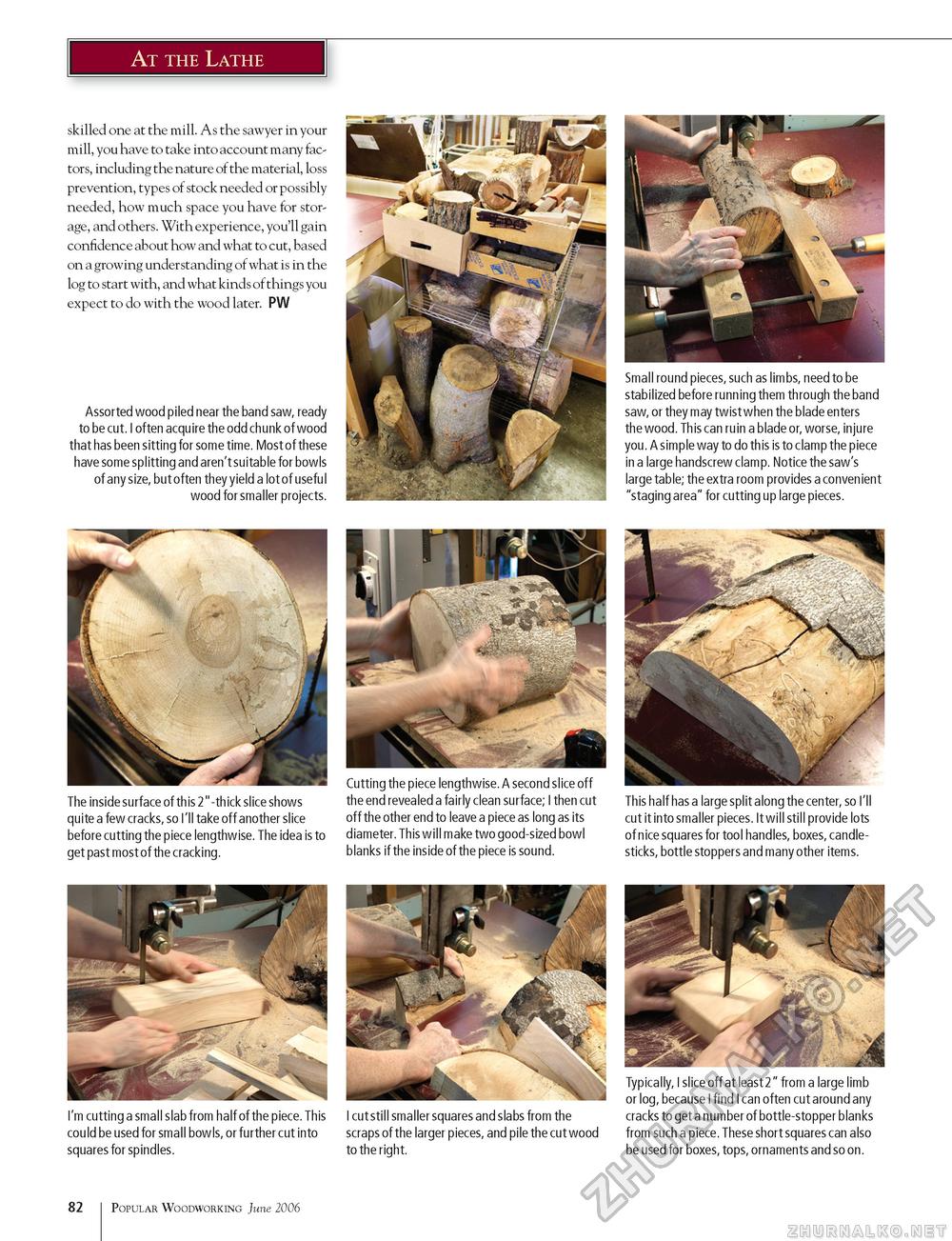Popular Woodworking 2006-06 № 155, страница 84
At the Lathe skilled one at the mill. As the sawyer in your mill, you have to take into account many factors, including the nature of the material, loss prevention, types of stock needed or possibly needed, how much space you have for storage, and others. With experience, you'll gain confidence about how and what to cut, based on a growing understanding of what is in the log to start with, and what kinds of things you expect to do with the wood later. PW Assorted wood piled near the band saw, ready to be cut. I often acquire the odd chunk of wood that has been sitting for some time. Most of these have some splitting and aren't suitable for bowls of any size, but often they yield a lot of useful wood for smaller projects. I'm cutting a small slab from half of the piece. This could be used for small bowls, or further cut into squares for spindles. Cutting the piece lengthwise. A second slice off the end revealed a fairly clean surface; I then cut off the other end to leave a piece as long as its diameter. This will make two good-sized bowl blanks if the inside of the piece is sound. I cut still smaller squares and slabs from the scraps of the larger pieces, and pile the cut wood to the right. Small round pieces, such as limbs, need to be stabilized before running them through the band saw, or they may twist when the blade enters the wood. This can ruin a blade or, worse, injure you. A simple way to do this is to clamp the piece in a large handscrew clamp. Notice the saw's large table; the extra room provides a convenient "staging area" for cutting up large pieces. This half has a large split along the center, so I'll cut it into smaller pieces. It will still provide lots of nice squares for tool handles, boxes, candlesticks, bottle stoppers and many other items. ff m Typically, I slice off at least 2" from a large limb or log, because I find I can often cut around any cracks to get a number of bottle-stopper blanks from such a piece. These short squares can also be used for boxes, tops, ornaments and so on. The inside surface of this 2"-thick slice shows quite a few cracks, so I'll take off another slice before cutting the piece lengthwise. The idea is to get past most of the cracking. 82 Popular Woodworking June 2006 |








